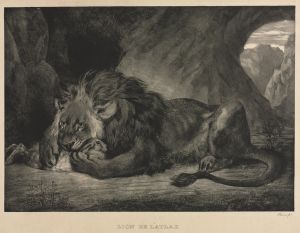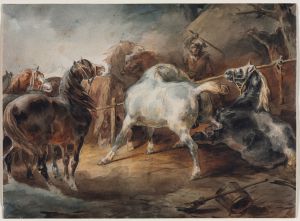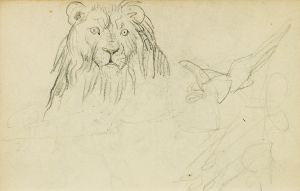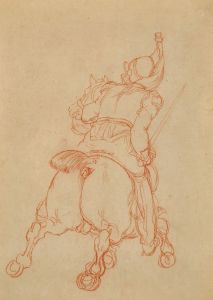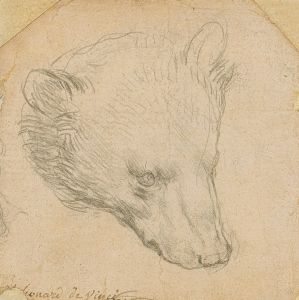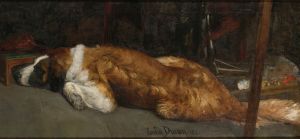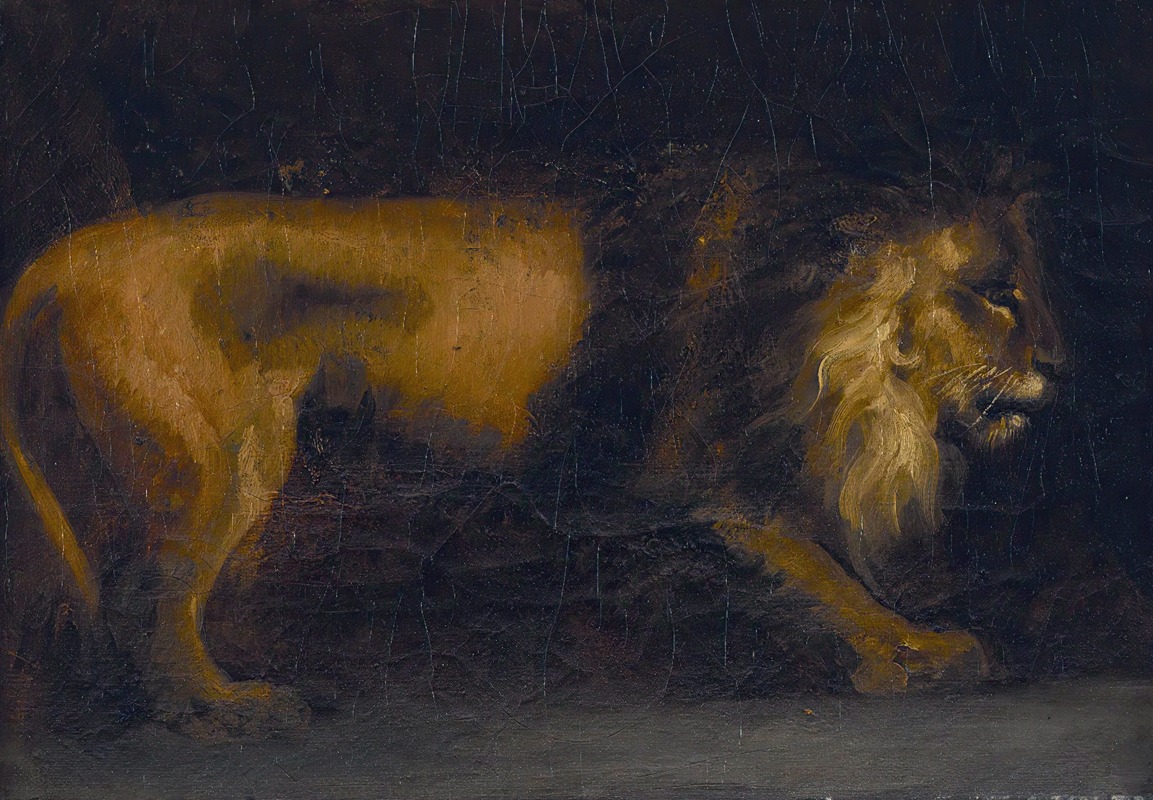
Study of a Lion
A hand-painted replica of Théodore Géricault’s masterpiece Study of a Lion, meticulously crafted by professional artists to capture the true essence of the original. Each piece is created with museum-quality canvas and rare mineral pigments, carefully painted by experienced artists with delicate brushstrokes and rich, layered colors to perfectly recreate the texture of the original artwork. Unlike machine-printed reproductions, this hand-painted version brings the painting to life, infused with the artist’s emotions and skill in every stroke. Whether for personal collection or home decoration, it instantly elevates the artistic atmosphere of any space.
Théodore Géricault, a prominent French Romantic painter, is widely recognized for his dynamic and emotive works. Among his lesser-known pieces is Study of a Lion, a drawing or painting that reflects his keen interest in animal anatomy and movement. Géricault was deeply influenced by the Romantic fascination with nature, power, and the sublime, and his studies of animals, including lions, were part of his broader artistic exploration of these themes.
Study of a Lion exemplifies Géricault's meticulous attention to detail and his ability to capture the raw energy and physicality of his subjects. Known for his preparatory studies, Géricault often sketched animals to better understand their anatomy and behavior, which he later incorporated into his larger compositions. Lions, as symbols of strength and majesty, were a fitting subject for his Romantic sensibilities.
This work is part of a broader tradition in European art where artists studied exotic animals, often inspired by the growing availability of such creatures in menageries and zoos during the 18th and 19th centuries. Géricault, like many of his contemporaries, likely had access to live lions for observation, which would have informed the accuracy and vitality of his depiction.
While Study of a Lion is not as widely discussed or documented as Géricault's major works, such as The Raft of the Medusa, it provides valuable insight into his artistic process and interests. The piece demonstrates his ability to convey both the physical form and the underlying spirit of his subject, a hallmark of his Romantic style.
Further details about the specific medium, dimensions, and current location of Study of a Lion are not readily available in existing records. However, the work remains an important example of Géricault's dedication to studying and representing the natural world with precision and emotion.






